Power Consumption
Idle power consumption on 120V power we saw around 12W idle. We generally assume these nodes will use 9-12W idle so this was directly in the range we would expect. Again, we do see power consumption creep slightly higher over time if dust accumulates in the fan/ heatsink and we had a new unit here. Still directionally this is in-line with the rest of the segment.
The power supply for this unit is a 65W Lenovo power adapter from the company’s notebook line. As you would expect, you can use the adapters from the company’s notebooks and also the Intel-based Lenovo Tiny nodes with this machine. We could push the system to around 58W so there is room to spare. We also will note that this system does not have the strongest USB configuration and features such s all USB 3 Gen1/Gen2 ports can drive power supply needs.
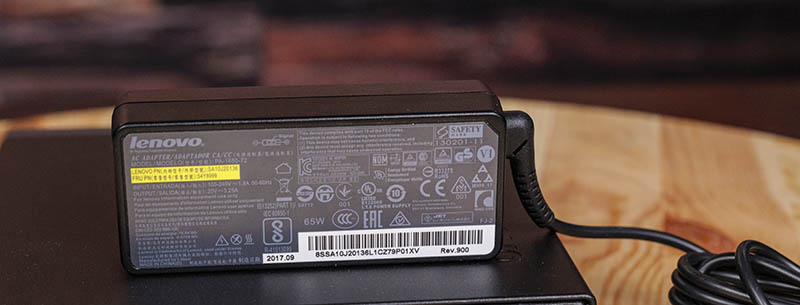
At idle, the system is not silent, but it is very quiet if working from 1M away. It stays fairly quiet under light loads but if you run heavy CPU/ GPU workloads the fans spin up and it certainly gets louder.
Next, we are going to discuss key lessons learned before getting to our final thoughts.
Key Lesson Learned for TMM
In this series, we wanted to also focus on some key lessons learned. Since we have already tested well over a dozen different models, we are taking away key pieces of advice from each that we wanted to share.
From a performance standpoint, the lesson here is simple. One can get a 2x performance boost over the M75q-1’s high-end AMD Ryzen 5 Pro 3400GE configuration or a mid-range Intel Core i5-8500T/ Core i5-9500T. Frankly, we think this unit at around $736 was a better value than the M75q-1 because the performance is so much better.
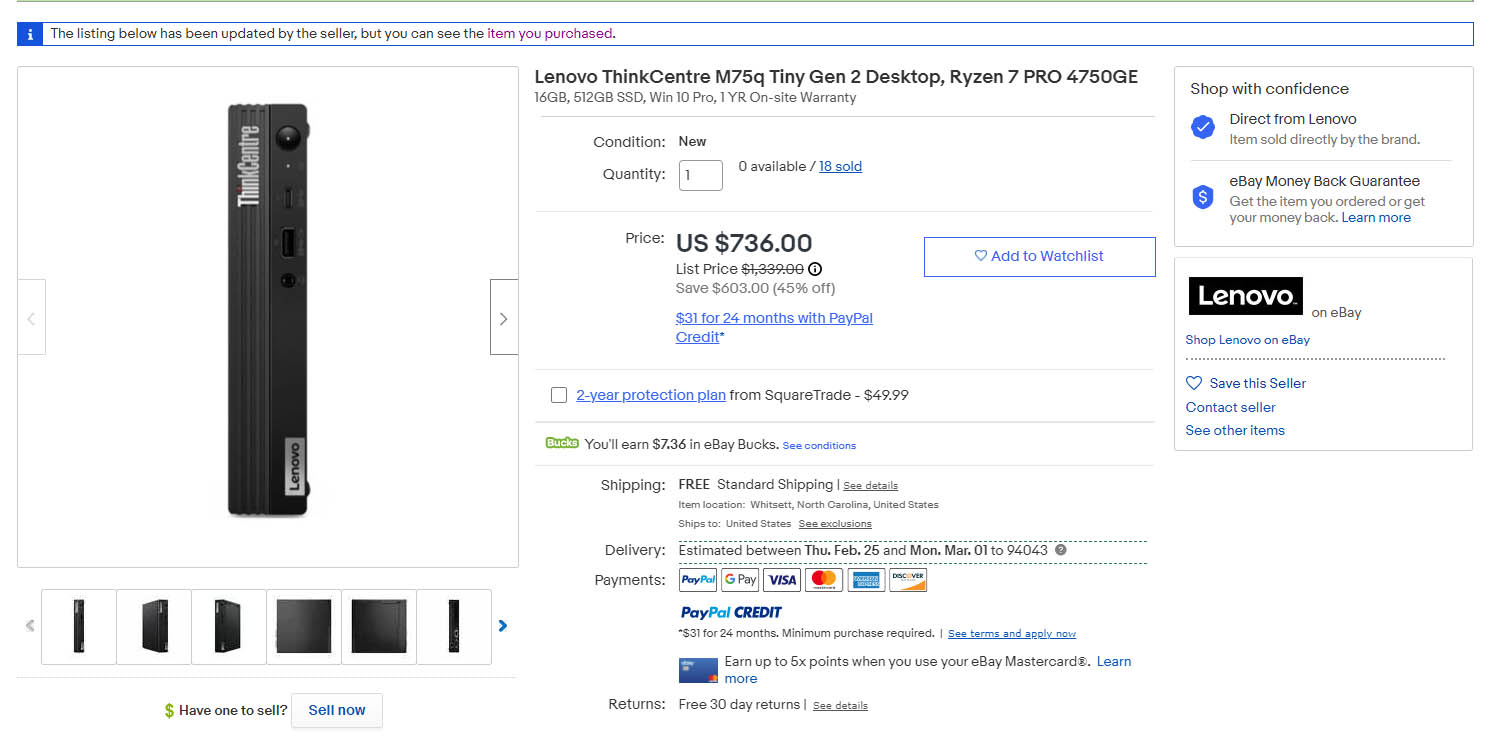
That brings us to the big question: used v. new. With this system, we get an on-site warranty from Lenovo. We also effectively get the performance of two Core i5-8500T/ i5-9500T systems. That means we do not need additional power outlets, network ports, and we get lower power consumption by consolidating into the newer platform. Make no mistake here, the AMD Ryzen 7 Pro 4750GE brings a new era of performance to the 1L segment. We have tested dozens of these ~1L corporate desktop PCs and this is simply a new domain of performance.
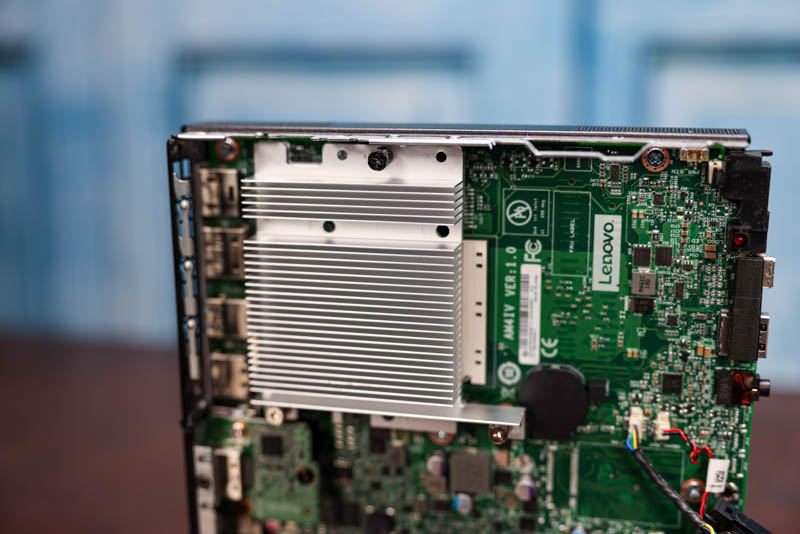
On the other hand, a valid point is that for the purposes of Project TinyMiniMicro, it may make sense to buy 2-3 used Core i5-8500T systems to increase the number of cluster nodes. After all, that was the original thrust behind the series.
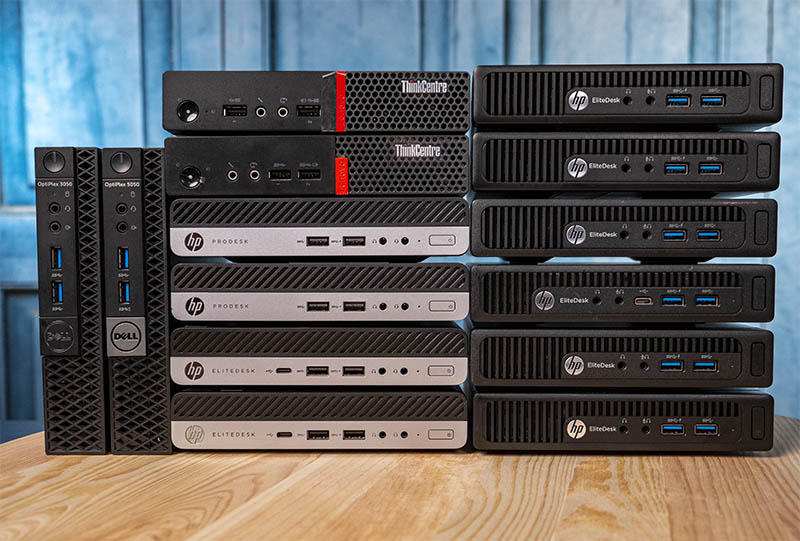
This is certainly an area where it is going to come to personal judgment. For me, this is the type of system I would use with 64GB of memory today as a small desktop to leave at the data center so I do not have to remember a notebook, or even as a small desktop to use as an admin node. It can then be transitioned into a role as a cluster node in the future. For others, they will see this as a way to build a nested virtualization lab on a single low-power node.
Final Words
Lenovo makes great systems in the 1L space. The Lenovo ThinkCentre M75q-2 Tiny with the AMD Ryzen 7 Pro 4750GE absolutely re-defines performance expectations in this market. While the original Ryzen parts in the segment required 25-35% gen/gen performance gains from Intel, this is one where the competition effectively got twice as fast between the M75q-1 and M75q-2. We will note that we wanted to purchase the HP EliteDesk 805 for comparison, but those tend to cost significantly more than the Lenovo units.
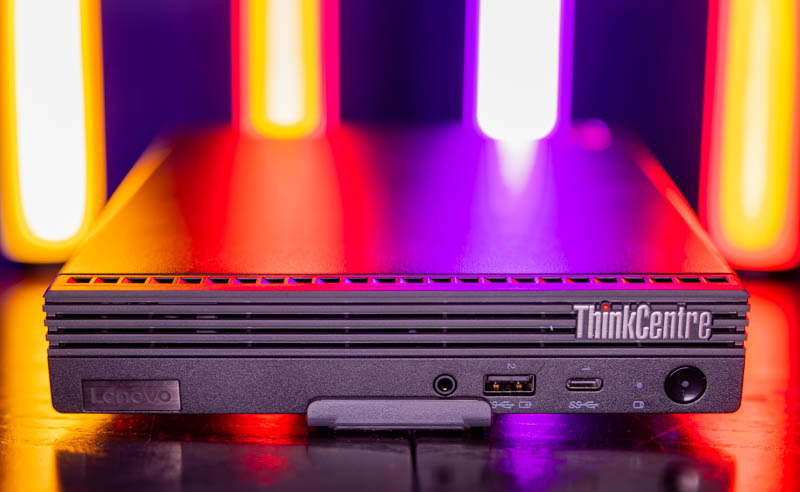
One way of explaining this is that the Lenovo ThinkCentre M75q Tiny Gen1 to Gen2 evolution is similar to what we saw on the server-side going from the AMD EPYC 7001 to EPYC 7002 series and on the desktop side with the Ryzen 3000 series (mainstream desktop, not this 35W TDP segment.) Zen 2 was absolutely revolutionary giving 2x performance gains. Lenovo was wise to harness this innovation with the M75q Tiny Gen2.
Looking ahead, we have the Core i9-10900T system in the lab along with the Core i5-10500T units from Dell, HP, and Lenovo. We also have a few 11th Gen Intel NUCs since that has been a widely requested inclusion in this series. I think we have a great base for discussing used units. Over time, these new units will be replaced so we now have a great catalog showing the history and evolution of the 1L Project TinyMiniMicro segment.

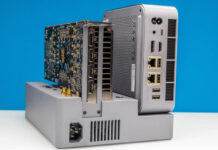


Just like I don’t drive a race car to work, I may not need a race computer for everything I do. It would be nice as part of this series to come up with possible real-world applications for which the slower recycled machines are sufficient and for which the physical isolation of being a separate device needed.
For example, one may want a ZFS-based NAS serving iSCSI network block devices and another serving an NFSv4 Kerberos-secured filesystem to a variety of other devices. For security these servers should not be some sort of converged device that is also running DNS, tftp and a webserver. Similarly those services may need to run on separate hardware, again to maintain segmented physical security.
When only one thing is desired, does the new Ryzen mini really work better than the cheapest slowest APUs reviewed in the beginning of this series? Maybe the CPU speed doesn’t matter, since physical security dictates only one service per device and everything is constrained by the network speed anyway.
The first thing that I want to Know about any of these systems is if the APU is socketed and can that be replaced and upgraded and the other thing is that the “GE” is a 35 Watt TDP Limited part so that needs to be noted there. Also there are a lot of AMD Ryzen Based “NUC” like systems available and the ASRock X300/AM4 system is more of a bare bones system that allows the end user to source their own Ryzen Desktop(APU) Processor and Memory/SSDs. Now The Pro Branded AMD Parts are usually OEM/SI only but the Socket/PGA AMD Pro Branded Desktop G/GE Series Ryzen Parts can be Gray Market sourced but there’s no official MSRP as those parts are only Trey Priced for OEM/SI market usage so prices can be a little high for single SKUs that are Grey Market sourced! With the ASRock X300 Mini Desktop there is also the option of just going with the Consumer Non Pro Branded APU Parts but those do not have the Pro/Business friendly and IT department friendly features enabled.
There are also many “NUC” like Ryzen Mini “desktop” SKUs that are using the Laptop/BGA based APUs of the Ryzen ####U/H/HS branded laptop/mobile parts and some with nice connectivity features.
A good source of Reviews of Mini Desktop AMD/Intel based mini desktop systems is ETA PRIME’s YouTube Channel but his review focus tends to be for Gaming and Game emulators for with those Systems as well as all manner on Raspberry PI systems and Handheld Gaming systems than now includes a 6 core/6 thread Ryzen Laptop/Mobile APU based handheld that’s very impressive for it’s size. In fact that Ryzen Based Handheld Gaming system Paired with an external USB Monitor and a nice portable Keyboard Tempts me for some on the go usage for more that just Gaming! But there are loads of these AMD Ryzen Based systems form different manufactures now and ETA PRIME does get around to reviewing them so that’s worth a look just to see.
My Biggest issue with AMD’s Ryzen and availability for someone living close to a Microcenter is that Microcenter appears to only stock Intel’s NUC/Partner NUC based offerings and really Microcenter has never stocked the ASRock Desk Mini A300/AM4 or its replacement the ASRock Desk Mini X300/AM4 SKU as well. I’m also having difficulty in most Office Stores seeing much in the way of any laptops but Intel’s laptops on the show floor with customers having to order the AMD laptops online.
All of these 1L’s in STHs TinyMiniMicro are socketed. If you buy with discounts it’s cheaper to buy these than BYO ASrock
Nice review.
Great review.
How well does AMD DASH work on these Ryzen systems compared to Intel AMT on vPro systems?
What remote management functionality is available via the AMD-provided clients/generic VNC client/ MeshCentral? I’m primarily interested in remote power cycling, BIOS management, and mounting isos/USB disks.
Thanks
@Patrick:
Surprised you didn’t know this, but there are many USB 2.0 devices which operate poorly on USB 3.0+ ports due to RFI. This is why most PCs are still shipping with 2 USB 2.0 ports – to enhance stability.
Examples include older Microsoft wireless keyboards, the Logitech Unifying Receiver, some older USB storage devices, and some low-quality “USB 3.0” storage devices which don’t exceed 30MB/s and which can experience data corruption when connected to USB 3.0 ports.
Lenovo offers a coupon sales at $600 for the 4750GE model. Better buy the rest from a 3rd party. They charge $1,000 for 64GB of memory *&^%$#@!
Caveat: Ships FREE in more than 5 weeks.
If you don’t care about the 1U format, the E in GE, and you are more on the DIY(*) side: you can find the 4750G(**) Pro for $391 from South Korea on eBay and the ASRock DeskMini X300W for $166 at NewEgg, then like for ThinkCentre M75q Tiny Gen 2, you add memory, NVMe, disks, 2.5 GbE USB adapaters from cheaper 3rd party.
(*) meaning you don’t care about support and warranty, you and the Internet “community” are you customer support.
(**) 4750G TDP is said to be 45W~65W (https://www.amd.com/en/products/apu/amd-ryzen-7-pro-4750g) so you a little bit kopeks on energy when idle (?)
As long as Lenovo offers coupons, and while being different, the DeskMini solution is only $65 cheaper. Without coupon $899 – $535 = $364 cheaper for barebone. I guess Lenovo will always have some sort of coupon to keep the price competitive.
The 4000 series APU are still over MSRP, better wait until availability at MSRP becomes the norm. Accordingly to multiple news sites, the 4750G Pro MSRP is $309 (e.g. https://www.tomshardware.com/news/heres-what-amd-ryzen-4000-apus-might-cost-if-you-could-actually-buy-them) all citing directly or indirectly the momomo_us leak back in summer 2020.
For server usage, these “tiny” systems always lack this thing: a PCIe Gen 3 x8 or x16 slot. A mini-itx with a PCIe Gen 3 x16 with BIOS bifurcation 2 x8 would be nice. You could plug-in a storage card and a 10+ GbE card in a DIY small box. I guess you do not find these because (a) CPU used in SoC mode do not have enough PCIe lanes (b) With a CPU + chipset to get a bifurcatable PCIe Gen 3 x16 slot, such solution would start eating too much into the low range server market, not a good move for mainstream mobo manufacturers / integrators.
2nd @MichaelP’s questions about DASH.
Would be wonderful if STH could do an article on DASH — there is so little publicly available about it.
Just out of curiosity – would 100 or even 200W USB-C PD be a possibility at some point with these micro corporate desktop form factors? It would be really nice to see uniform compatibility with the consumer market on some level, as it may drive down the cost on certain consumable components (like charging cables and power bricks that seem to break so easily).
These are impressive for the money (apparently 5% more off via their smallbiz program). Really tempted to pick up a 4750GE with only 4GB of memory and the 500GB SATA disk to DIY upgrade (64GB, M.2 Samsung 980 Pro) and run this as a power-sipping Proxmox box.
I had been sitting down and looking at all the Comet Lake options out there, but forgot the Renoir APU options had just hit very recently (early this year, no?). Hard to argue the PPW.
What’ll be interesting is whenever Cezanne APUs are offered, as engineering samples have been making circles for a bit now. Though given these Gen 2s are only now just released (with Lenovo saying 12+ weeks before orders ship) I’d guess that it’ll be 2022 until those are available. Still something to look forward to, though! It’s nice to deploy a workhorse for cheap money that doesn’t make a racket, run up the utility bill, nor take up real space.
Can you confirm if ECC RAM is supported for your Ryzen 7 PRO 4750GE model? It’s been confirmed that other PRO APUs will run on ECC RAM.
Please test out ecc ram with thos unit. It should run because the Pro CPU has it verified.
So I placed an order for one of these on March 12th. Was very excited. Bought 64GB of memory and a 1TB Samsung Pro to put in it when it arrived.
At about 10AM US Eastern on March 19th, apparently tons of people received an email that their order was canceled. Calling Lenovo confirmed this, and they said that the product has been EOL’d. There’s a bit of a discussion on the Lenovo subreddit, and that message has been consistent.
I ended up just ordering an HP ProDesk 405 G6 Desktop Mini with basically an identical spec, with sales assuring me that it’s very much still for sale. It’s slightly more compact a package. Supposed to ship April 8th, and I hope it does.
How to use two 4K resolution displays with 60 Hz each?
Sadly, it is now discontinued…. see the lenovo site.
Yep. The sales rep message that it was EOL’d was a bit unbelievable at first, but sure enough, they too the product off the market after… only a few months of availability?
My HP ProDesk 405 G6 with the same 4750GE missed its ship date of April 8th. Called today that it’s tentatively May 11th, due to component supply constraints. When will it ship? We’ll see.
Bought a 4350GE M75-2 8GB/256GB in January, delivered 23.02.21. Paid 369€ in Germany incl 19%VAT 3year onsite9x5.
Before had a Dell 9020M with i3-4350T.
I got 4 times computing capability and idle/surfing@ 12 Watt.
4K60Hz with kubuntu, everything runs oob.
First time i bought a computer with delivery time.
Worth the wait.
Upgraded to 16GB and add a 1TB SSD, got a package unthinkable 6 years ago.
Will serve me for appr. 5y min.
Today we likely have the reason for the lack of availability of anything with Zen 2 APUs in it:
Zen 3 APUs (Cezanne) launched today. Both the 65W and the 35W E variants. The PRO versions will be made available to OEMs, “in the coming weeks.”
My ProDesk 405 G6 that got pushed out? The ship dates keep slipping. I’ll be keeping my eyes peeled for a Zen 3 successor launching and make sure to get my orders in quickly. I’d expect a successor to the Lenovo M75q Tiny Gen 2 to launch in the next 4 to 6 weeks as well.
For something like a 4750GE to a 5750GE, looks like base clock is up 100MHz, max boost clock is up 300MHz, and cache is increased from 12MB to 20MB.
Patrick,
I was recently pointed to this Japanese (with subtitles) review of the M75q, and at 6:25 they claim that Lenovo will vendor lock any CPU that is installed there (similar to what they do in the P620 and in servers): https://youtu.be/JYHXzBAdSLY?t=385
Can you confirm or deny that this happens?
We have not tried swapping CPUs in these yet.
Patrick, have you tried any ECC rams with this unit?
Cheers!
Long shot but hoping someone has come across this, and solved it.
I bought one of these from Ebay (4650E with 16GB RAM) for £500, which I was very pleased with. The CPU is unbelievably powerful! The base Windows 10 install plus all the post install updates absolutely fly.
However, the Realtek NIC has a real bummer of a flaw: it takes a good 60-90 seconds to connect after the Tiny resumes from sleep. Ironically, I can wake the Tiny via either WOL or just trying to connect to RDP (wake on RDP!), but it then takes the aforementioned 60-90 seconds before it is available on the network. I’ve tried with both static and DHCP IP, no difference. Have tried the NIC on both auto-negotiate and on 1000-Full, no difference. Tried with both the latest Windows Update driver, the driver on the Lenovo site, and even the driver on the Realtek site, no difference.
I’m running Windows 10 21H1 fully patched.
My switch is a Unifi 8-port US-8-150W which is set to auto-negotiate. I’ve never had any issues with this switch.
Has anyone found a solution to this problem?
@Patrick
>Naturally, a full server has more ECC memory support
Patrick – why would you phrase it like this and give people a false hope of ecc memory suport?
Could you try ecc ram in this board and let us know?
Be aware.
you will not be able to move cpu from this mini desktop to another motherboard!
They are apparently doing vendor-locking of these CPUs at the factory (PSB locking) – meaning after this mobo is dead – cpu is also an e-waste greatly damaging secondary market.
https://www.reddit.com/r/Amd/comments/rpuqj9/amd_psb_vendor_locking_enabled_by_default_on/
I would consider small claims court if you find yourself in this situation.
ldev – that is not how PSB works exactly. You should be able to replace the motherboard with another Lenovo model.
Great review!
My question is on mass storage. Is the 2.5″ SATA HDD option limited to a max. of 1 TB capacity in the M75q Gen2 Tiny? Or can we insert a 2 TB HDD as well?
Hannes–you shouldn’t have an issue installing any capacity drive as long as it fits and doesn’t overheat.